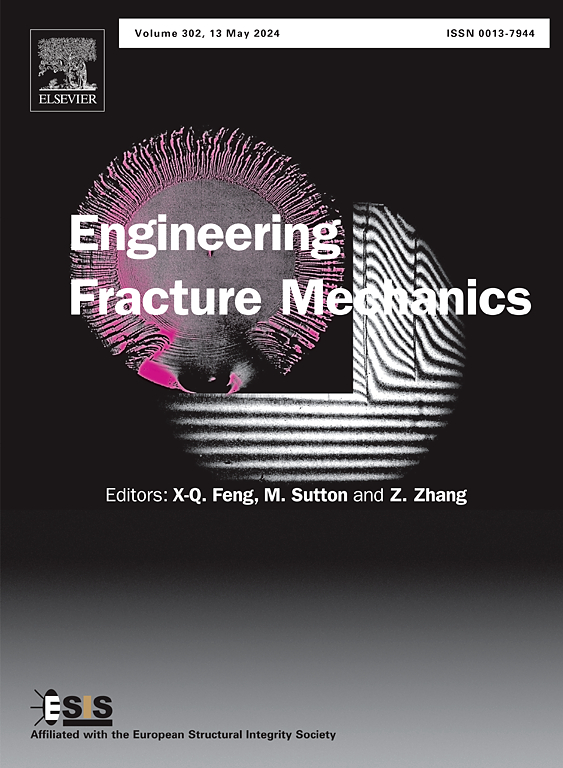厚度对850℃下镍基单晶高温合金微缺口试样疲劳裂纹萌生的影响
IF 4.7
2区 工程技术
Q1 MECHANICS
引用次数: 0
摘要
研究了厚度对镍基单晶高温合金(Ni-SX)微缺口试样疲劳性能和裂纹起裂机制的影响。通过对不同厚度的双侧四缺口微试件(BFMS)进行850℃、950 MPa的疲劳试验,获得了试件在相同名义应力下的疲劳寿命。结果表明,厚度对BFMS疲劳性能的影响不是单调的。对BFMS破坏表面的分析揭示了两种裂纹起裂机制:边缘裂纹(EC)型起裂机制和次表面裂纹(SC)型起裂机制。采用损伤耦合的宏观各向异性本构模型对不同厚度的BFMS进行了仿真分析。研究发现,ec型起爆可以用各向异性等效应力、累积非弹性应变或损伤因子来表征,而sc型起爆则与应力三轴性高度相关。最后,引入考虑厚度、应力三轴性和裂纹起裂角的机器学习模型对BFMS疲劳寿命进行预测,预测结果与实验结果吻合。本文章由计算机程序翻译,如有差异,请以英文原文为准。
Effect of thickness on fatigue crack initiation of nickel-based single crystal superalloy micro notched specimens at 850 °C
The effect of thickness on the fatigue performance and crack initiation mechanism of nickel-based single crystal superalloy (Ni-SX) micro-notch specimens were studied. The fatigue lives of specimens under the same nominal stress were obtained by conducting fatigue tests at 850 °C and 950 MPa on bilateral four-notched micro specimens (BFMS) with different thicknesses. The results indicate that the effect of thickness on the fatigue performance of BFMS is not monotonic. Analysis of failure surfaces of BFMS revealed two kinds of crack initiation mechanism: Edge Crack (EC) type initiation mechanism and Subsurface (SC) Crack type initiation mechanism. A damage-coupled macroscopic anisotropic constitutive model was used to conduct a simulation analysis of BFMS with different thicknesses. It was found that EC-type initiation can be characterized by anisotropic equivalent stress, cumulative inelastic strain or damage factor, while SC-type initiation is highly correlated with stress triaxiality. Finally, a machine learning model that considered thickness, stress triaxiality, and crack initiation angle was introduced to predict the fatigue life of BFMS, and the predicted results agree with the experimental results.
求助全文
通过发布文献求助,成功后即可免费获取论文全文。
去求助
来源期刊
CiteScore
8.70
自引率
13.00%
发文量
606
审稿时长
74 days
期刊介绍:
EFM covers a broad range of topics in fracture mechanics to be of interest and use to both researchers and practitioners. Contributions are welcome which address the fracture behavior of conventional engineering material systems as well as newly emerging material systems. Contributions on developments in the areas of mechanics and materials science strongly related to fracture mechanics are also welcome. Papers on fatigue are welcome if they treat the fatigue process using the methods of fracture mechanics.

 求助内容:
求助内容: 应助结果提醒方式:
应助结果提醒方式:


